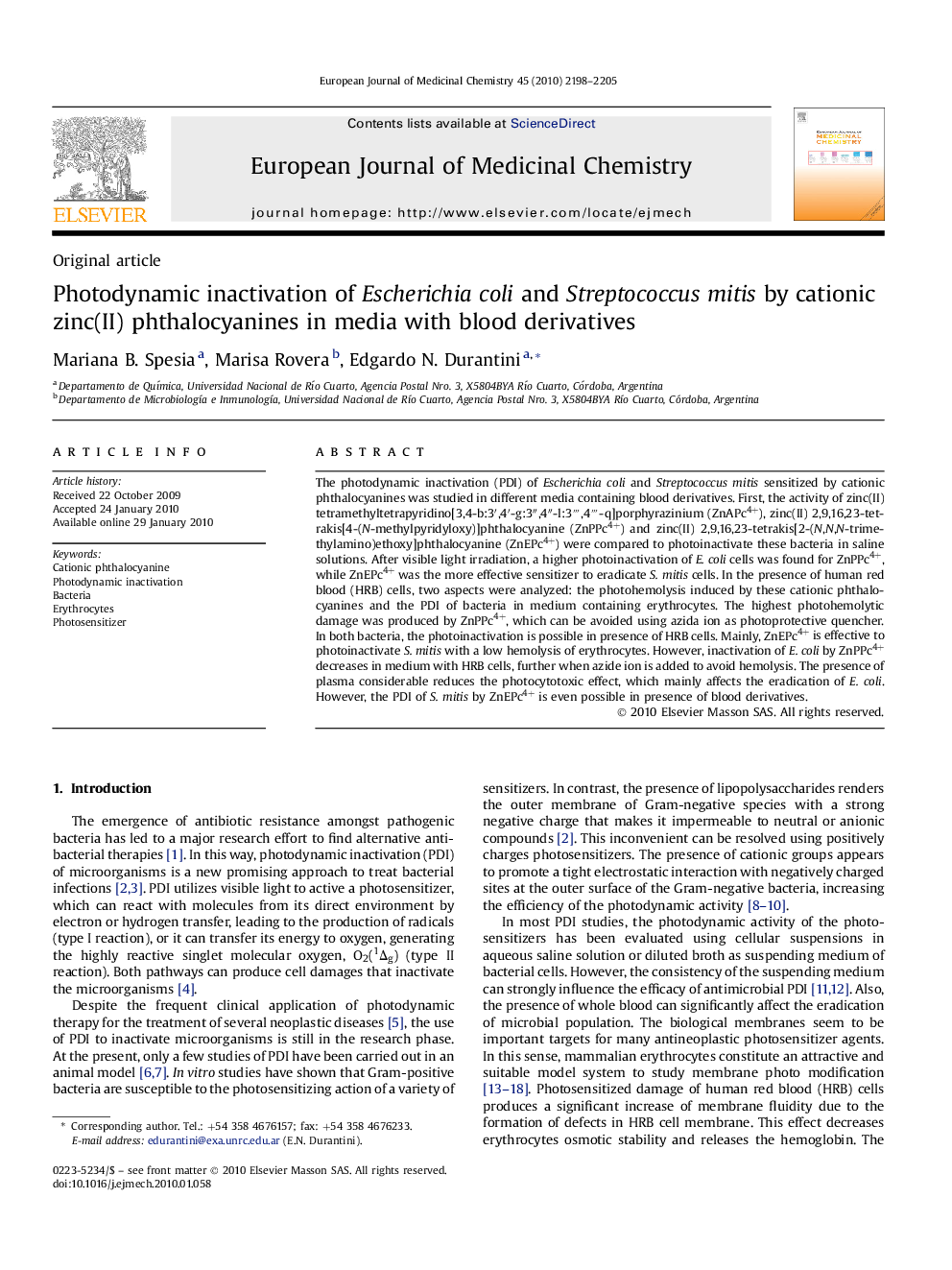| Article ID | Journal | Published Year | Pages | File Type |
|---|---|---|---|---|
| 1397706 | European Journal of Medicinal Chemistry | 2010 | 8 Pages |
The photodynamic inactivation (PDI) of Escherichia coli and Streptococcus mitis sensitized by cationic phthalocyanines was studied in different media containing blood derivatives. First, the activity of zinc(II) tetramethyltetrapyridino[3,4-b:3′,4′-g:3″,4″-l:3‴,4‴-q]porphyrazinium (ZnAPc4+), zinc(II) 2,9,16,23-tetrakis[4-(N-methylpyridyloxy)]phthalocyanine (ZnPPc4+) and zinc(II) 2,9,16,23-tetrakis[2-(N,N,N-trimethylamino)ethoxy]phthalocyanine (ZnEPc4+) were compared to photoinactivate these bacteria in saline solutions. After visible light irradiation, a higher photoinactivation of E. coli cells was found for ZnPPc4+, while ZnEPc4+ was the more effective sensitizer to eradicate S. mitis cells. In the presence of human red blood (HRB) cells, two aspects were analyzed: the photohemolysis induced by these cationic phthalocyanines and the PDI of bacteria in medium containing erythrocytes. The highest photohemolytic damage was produced by ZnPPc4+, which can be avoided using azida ion as photoprotective quencher. In both bacteria, the photoinactivation is possible in presence of HRB cells. Mainly, ZnEPc4+ is effective to photoinactivate S. mitis with a low hemolysis of erythrocytes. However, inactivation of E. coli by ZnPPc4+ decreases in medium with HRB cells, further when azide ion is added to avoid hemolysis. The presence of plasma considerable reduces the photocytotoxic effect, which mainly affects the eradication of E. coli. However, the PDI of S. mitis by ZnEPc4+ is even possible in presence of blood derivatives.
Graphical abstractThe paper reports details about the photodynamic inactivation of bacteria by tetracationic phthalocyanines with different molecular structures in media containing blood derivatives.Figure optionsDownload full-size imageDownload as PowerPoint slide
